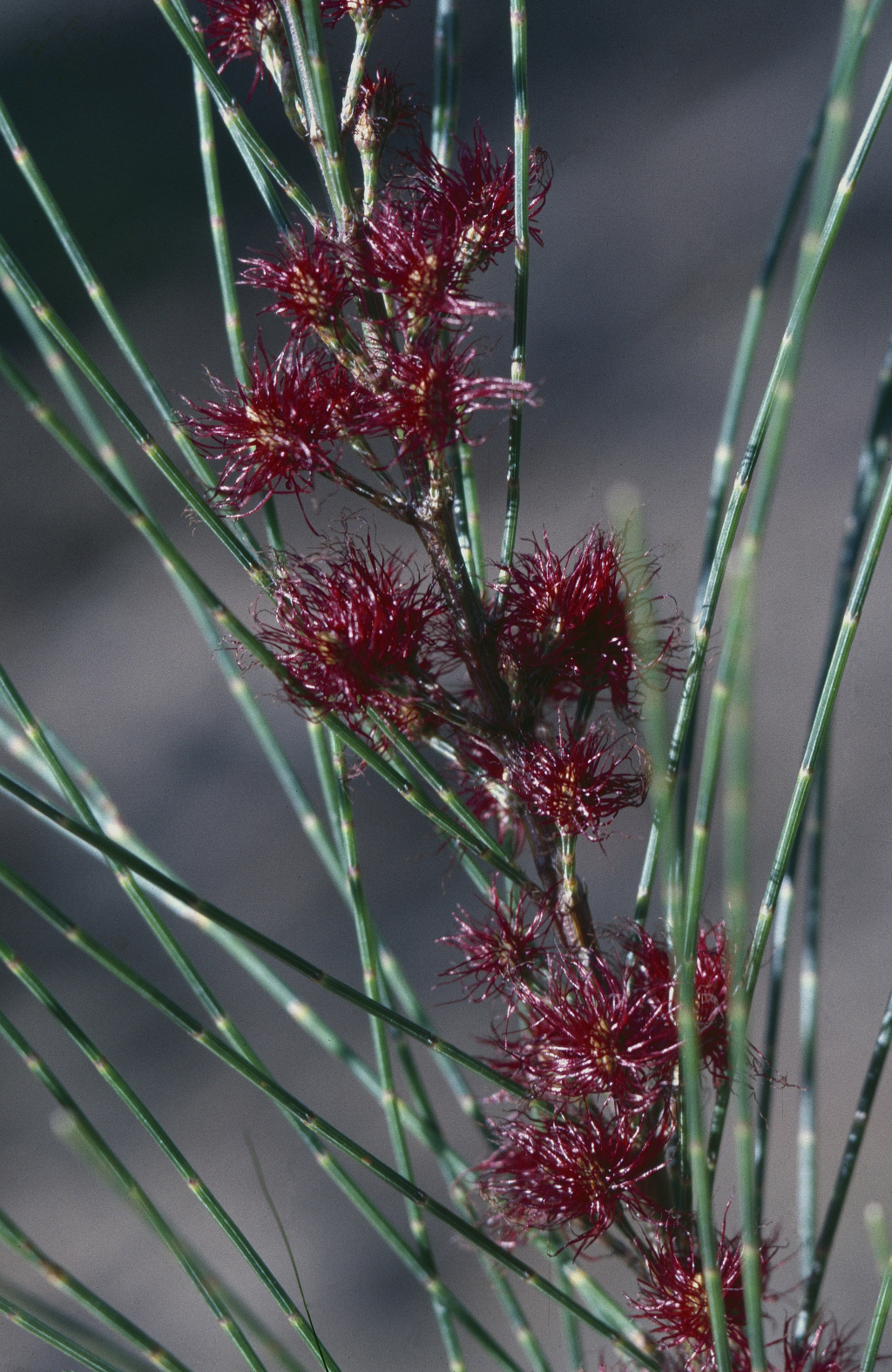Allocasuarina littoralis
(Salisb.) L.A.S.Johnson Black SheoakDioecious (or less commonly monoecious) tree or shrub, usually 5–15 m tall, but sometimes shorter; penultimate branchlets woody. Bark fissured. Branchlets ascending or drooping, mostly to 20 cm long; internodes 4–10 mm long, 0.4–1 mm diam., smooth, pubescent in furrows; ribs angular or rounded with central keel. Teeth (5–)6–8(–9), erect or rarely spreading, c. 0.5 mm long, not overlapping, usually not withered. Male spikes 5–50 mm long, 6–13 whorls per cm; anther c. 0.5 mm long; bracteoles persistent. Cones cylindric, usually longer than broad, pubescent at least when young, on peduncle 4–23 mm long; cone body 10–30(–45) mm long, 8–21 mm diam.; valves in several rows, hardly extending beyond cone body, broadly acute to obtuse, sometimes pungent, thick pyramidal protuberance shorter than bracteole body, occasionally with 2 lateral bodies. Winged seeds 4–10 mm long, dark brown to black. Flowers all year.
VVP, GipP, OtP, Gold, CVU, GGr, DunT, NIS, EGL, EGU, WPro, HSF, HNF, OtR, Strz, HFE, VAlp. Also Qld, NSW, ACT, Tas. Mainly growing on near-coastal sands but also on heavy clay soils or among rocks. Forms pure woodlands from French Is. eastwards.
Cones vary considerably in size. Branchlets, although variable in thickness, are generally thinner than those found in other species of Allocasuarina or Casuarina. With its fine and relatively short ultimate branchlets, the foliage of A. littoralis can superficially resemble pine needles.
Entwisle, T.J. (1996). Casuarinaceae. In: Walsh, N.G.; Entwisle, T.J., Flora of Victoria Vol. 3, Dicotyledons Winteraceae to Myrtaceae, pp. 90–101. Inkata Press, Melbourne.
 Spinning
Spinning


